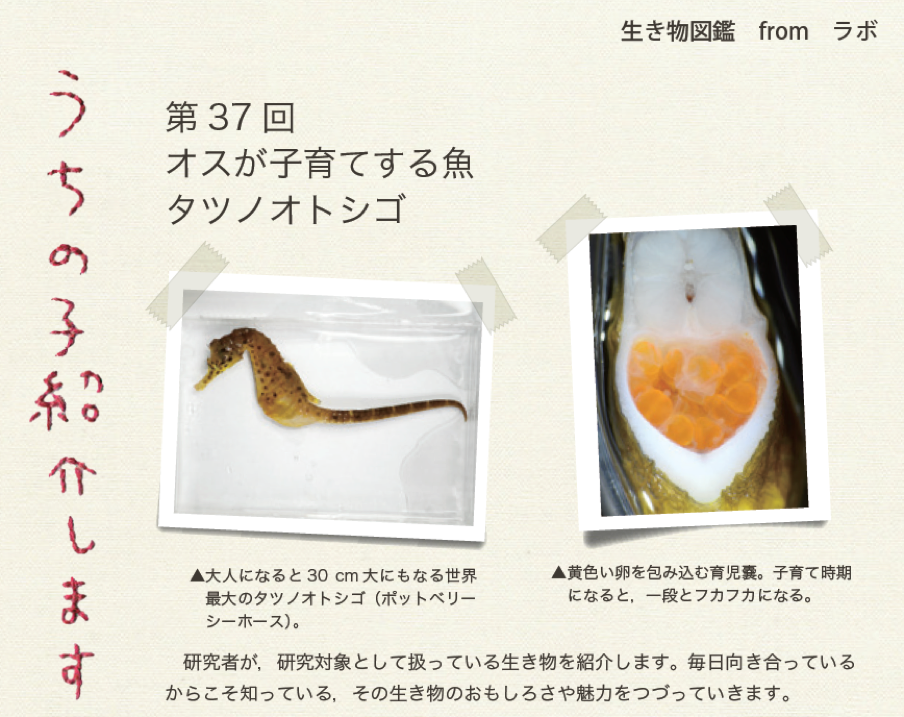- someone
[SOMEONE VOL.36] [Illustrated Guide to Living Things from the Laboratory] Male fish raising their young: seahorses.
2017.03.17
Seahorses are fish with a face like a horse, as their name "hippocampus" in Chinese implies. In fact, they raise their young with great tenderness. Seahorses have a fluffy pouch for raising their young called an ikuji-no-suk, which protrudes from their abdomen. Males are actually the ones who have this pouch. The female lays her eggs in the sac, and the male carefully nurtures them until the fry grow from about 1 to 2 mm in size to about 1 cm in diameter. When the fry leave the nest, the male is hard at work and gives birth with a "pop". The male is just like a human being. I can't help but cheer them on," says Mari Kawaguchi of Sophia University. Thanks to this "fatherly parenting," the survival rate of fry is about 100,000 times higher than that of sunfish and other fish that do not raise their young.
Kawaguchi's research has been conducted in order to understand how this unusual method of rearing children has evolved. Among the seahorse's relatives, the seahorse, which uses a pouch called a nursemagus, is by far the safest of all. Dr. Kawaguchi believes that the seahorse may have evolved over tens of thousands of years from the seadragon type of parental care to the pond smelt type and then to the seahorse type, and is studying their genes. Recent genetic studies have shown that the egg membrane of seahorses with a nursery sac is thinner than that of other fish, allowing the fry to hatch without using some of the enzymes that dissolve the egg membrane. The fry have also evolved to match the nurturing sac. We may soon be able to understand how seahorses evolved and acquired their father's loving parenting method. (Text by Hiroyuki Doi)
Interviewed by Mari Kawaguchi, Department of Materials and Life Science, Faculty of Science and Engineering, Sophia University
